calsfoundation@cals.org
George Washington Donaghey (1856–1937)
Twenty-second Governor (1909–1913)
George Washington Donaghey, the twenty-second governor of Arkansas, built a legacy in the state that endures today through his support of education. He was involved, directly or indirectly, in the beginnings of six of ten publicly supported universities in the state, as well as the creation of a state board of education. Beyond education, his work as governor left behind the initiative and referendum amendment to the Arkansas Constitution, a state board of health with the power to regulate sanitation and inspect food and drugs, prison and tax reform, and the completion of a new state capitol building.
George W. Donaghey was born on July 1, 1856, in Oakland, Louisiana, to C. C. Donaghey, a farmer, and Elizabeth Ingram, a homemaker. They had five other children, two boys and three girls.
In 1858, the Donagheys moved to Lapile (Union County) in southern Arkansas. Donaghey worked on the family farm and was in Texas from 1876 to 1879, working at odd jobs, including about four months on the Chisholm Trail as a cowboy. He moved to Conway (Faulkner County) by 1880 to live with his uncle and stayed there for thirty years.
His formal education was meager; he spent one year at the University of Arkansas (UA) in Fayetteville (Washington Couny). He became a carpenter and used this skill as a springboard into building and contracting, constructing residences and other buildings in Arkansas and Texas. By 1890, Donaghey was successful enough to become a full-time contractor.
On September 20, 1883, Donaghey married Louvenia Wallace, who was born in Darlington, South Carolina, in 1862. Her family moved to Arkansas when she was seventeen.
The couple lived in Conway, where Donaghey was a major participant in bringing higher education institutions to the city. Donaghey contributed $1,500, one-third of his assets at the time, to a fund started by the townspeople to move Hendrix College to Conway in 1890. Likewise, he was on the building committee and pledged $5,000 to bring Central College for Women to Conway. Donaghey was also in charge of the fundraising to bring the Arkansas State Normal School (later Arkansas State Teachers College, and then the University of Central Arkansas) to Conway. It was the third college to locate in Conway during this period.
Donaghey was also active in local politics. He was part of the campaign to drive the saloons out of Conway, because no college at that time would consider operating in a town that had saloons. The anti-saloon campaign was successful, and Conway became a dry city in 1888. Donaghey was elected town marshal in 1884 on the anti-saloon ticket but was defeated one year later when he ran for mayor on the same ticket.
Donaghey became wealthy as a railroad contractor from 1899 to 1903, after the Indian Territory was first opened for settlement. He moved to Little Rock (Pulaski County) by 1908 and entered the Democratic primary as a candidate for governor in the same year. In the primary, he defeated William F. Kirby, a former state attorney general who was endorsed by Senator Jeff Davis. This was the first major defeat suffered by the Davis machine. Donaghey easily defeated his Republican opponent, John Worthington, in the general election of 1908 with seventy-one percent of the vote.
Donaghey’s administration faced a fiscal crisis in 1909 caused by a 1905 reduction in the millage rate for state general operations and state expenditures exceeding state revenues. He cut the state budget for the next two years by almost forty percent. These cuts reached a total of $623,600 out of a state biennial budget of $1.6 million and included $50,000 taken from the University of Arkansas and $200,000 saved by eliminating a second state hospital. Despite this emergency, Donaghey was able to establish and fund four agricultural high schools, which later became Arkansas State University (ASU) in Jonesboro (Craighead County), Arkansas Tech University in Russellville (Pope County), Southern Arkansas University (SAU) in Magnolia (Columbia County), and the University of Arkansas at Monticello (UAM) in Drew County. He supported, and the Arkansas General Assembly approved, an Arkansas Tax Commission, which had power to equalize property assessments throughout the state, and a tuberculosis sanatorium at Booneville (Logan County). The 1909 legislature, at Donaghey’s insistence, submitted to the people a proposed constitutional amendment that established initiative and referendum, which are legal procedures by which the people can put on the ballot proposed initiated acts and constitutional amendments, as well as referring laws passed by the legislature to a popular vote. The people ratified the amendment in 1910, and for seventy years, Arkansas was the only Southern state with any kind of initiative and referendum.
Donaghey ran for a second term as governor in 1910 against C. C. Kavanaugh and was reelected with sixty-nine percent of the vote. His second legislative session saw the creation of a new state board of health with enlarged powers over sanitation, food, and drugs, as well as a state board of education to supervise the 5,143 school districts in the state in 1911.
After saying that he would not run for a third term, Donaghey changed his mind and was overwhelmingly defeated by Congressman Joe T. Robinson, who won with sixty-six percent of the popular vote. His broken third-term pledge, the unpopularity of some of his fiscal reforms, and Robinson’s speaking and campaigning ability contributed to Donaghey’s defeat. Before leaving office in 1913, Donaghey pardoned 360 inmates in the state penitentiary, thirty-seven percent of the total prison population, most of whom were serving short sentences. He did this to end convict leasing, a system that he believed forced convicts to work under inhumane and unhealthy conditions. Donaghey reasoned that by pardoning all surplus convicts not needed to cultivate the state farm, there would be no convicts available for lease. Within two months of Donaghey’s action, the Arkansas legislature abolished convict leasing.
Another project that bears Donaghey’s imprint is the Arkansas State Capitol building. While being built, it was beset with construction problems, legislative scandals, and strong opposition. Donaghey was mainly responsible for pushing the new State Capitol to its successful completion by hiring nationally known architect Cass Gilbert and by appointing a non-political state capitol commission consisting of bankers and architects to supervise the construction.
After leaving the governor’s office, Donaghey devoted himself to commercial and charitable work in Little Rock. In 1929, the Donagheys transferred ownership of the Donaghey Building and the Federal Bank and Trust Building in Little Rock to Little Rock Junior College. Valued between $1.5 and $2 million, the endowment was one of the most generous ever given in the state. Little Rock Junior College eventually became the University of Arkansas at Little Rock (UALR), bringing to six the number of publicly supported universities whose creation was affected by Donaghey.
Donaghey suffered a heart attack on December 13, 1937, and never regained consciousness. He died in Little Rock on December 15 at the age of eighty-one and is buried in Roselawn Memorial Park in Little Rock. His estate is administered by the George W. Donaghey Foundation, located in Little Rock.
For additional information:
Donaghey, George W. Autobiography of George W. Donaghey. Benton, AR: L. B. White Publishing Co., 1939.
———. Homespun Philosophy of George W. Donaghey. N.p., n.d.
Donovan, Timothy P., Willard B. Gatewood Jr., and Jeannie M. Whayne, eds. The Governors of Arkansas: Essays in Political Biography. 2d ed. Fayetteville: University of Arkansas Press, 1995.
George Washington Donaghey Papers. Special Collections. University of Arkansas Libraries, Fayetteville, Arkansas.
Ledbetter, Calvin R. Jr. “Adoption of Initiative and Referendum in Arkansas: The Roles of George W. Donaghey and William Jennings Bryan,” Arkansas Historical Quarterly. 51 (Autumn 1992): 199–223.
———. Carpenter from Conway: George Washington Donaghey as Governor of Arkansas 1909–1913. Fayetteville: University of Arkansas Press, 1993.
Morton, Allen L. “The Influence of George Washington Donaghey … As Seen in Conway.” Faulkner Facts and Fiddlings 11 (Winter 1969—1970): 78–85.
Cal Ledbetter
University of Arkansas at Little Rock
This entry, originally published in Arkansas Biography: A Collection of Notable Lives, appears in the CALS Encyclopedia of Arkansas in an altered form. Arkansas Biography is available from the University of Arkansas Press.


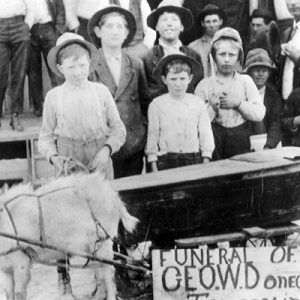
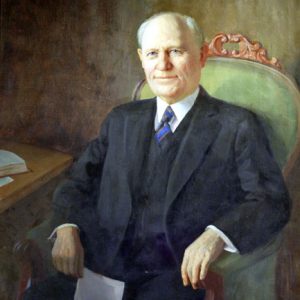
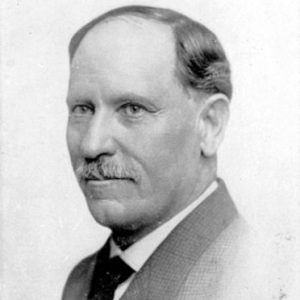
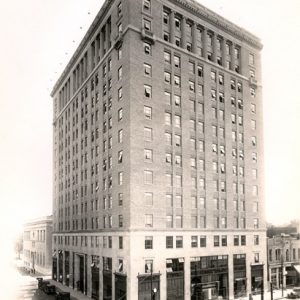
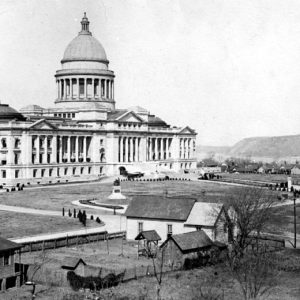





Comments
No comments on this entry yet.